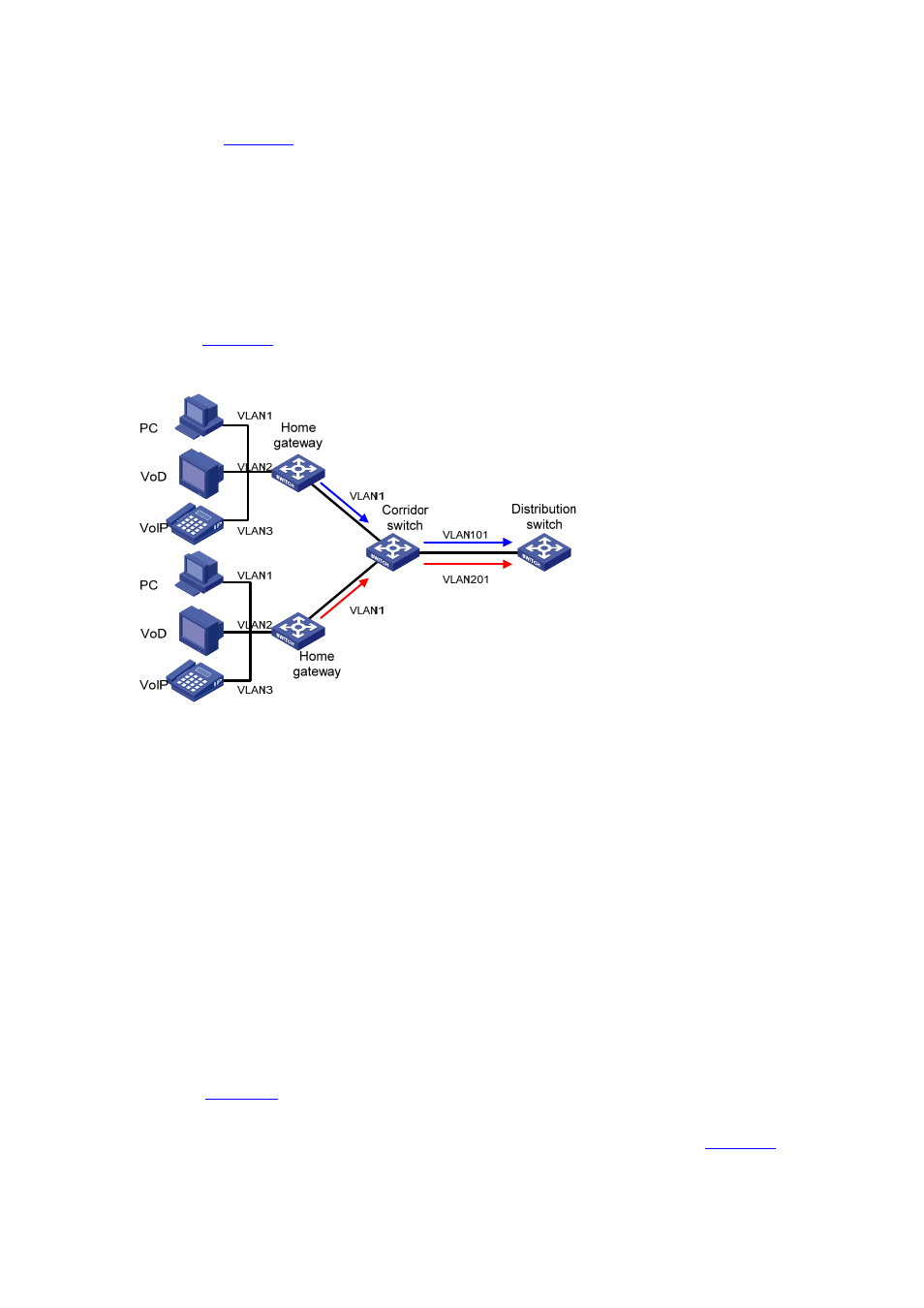H3C Technologies H3C S3100 Series Switches User Manual
Page 859

1-2
As shown in
, each user in the community has multiple applications. The VLAN technology is
used on the home gateway to distinguish traffic types. Because each home gateway has the same
configuration, the same type of traffic from different users is transmitted within the same VLAN. As a
result, the upper-layer device (such as the distribution switch) cannot identify the users of traffic
streams.
To address this problem, configure one-to-one VLAN mapping on the corridor switch to map the same
type of traffic received on different ports to different VLANs, so that the upper-layer device can identify
the user of a traffic stream by VLAN. After one-to-one VLAN mapping is configured, the network is as
shown in
Figure 1-2 After one-to-one VLAN mapping
……
Implementation and Application of Many-to-One VLAN Mapping
Many-to-one VLAN mapping maps traffic from two or more VLANs to the same VLAN for transmission.
Many-to-one VLAN mapping can map uplink traffic streams from multiple original VLANs to the same
target VLAN, and can correctly restore the original VLANs for downlink traffic streams.
z
In the uplink direction, you can configure a mapping rule to map multiple original VLANs to the
same target VLAN. In addition, upon receiving an uplink packet from an original VLAN, the device
records the source MAC address of the packet in the MAC address table of the original VLAN.
z
In the downlink direction, upon receiving a downlink packet, the device searches for the destination
MAC address of the packet in the MAC address tables of all original VLANs. If a match is found in
an original VLAN, the device replaces the VLAN tag of the downlink packet with the original VLAN
tag.
The application scenario of many-to-one VLAN mapping is the same as one-to-one VLAN mapping (as
). Many-to-one VLAN mapping can map the uplink traffic streams from multiple
VLANs of a user to the same VLAN, so that the upper-layer device can count the total traffic of a user by
VLAN. After many-to-one VLAN mapping is configured, the network is as shown in
: